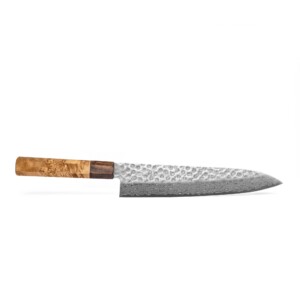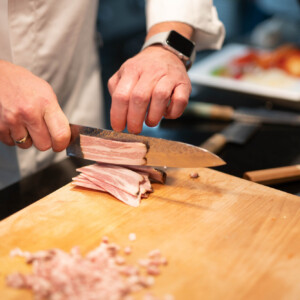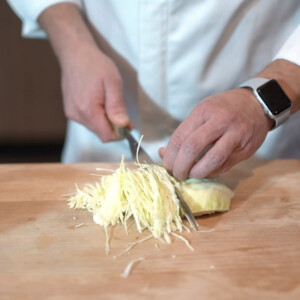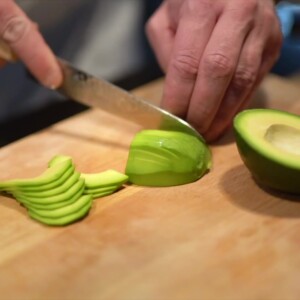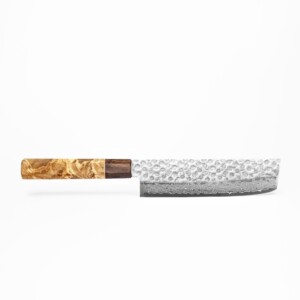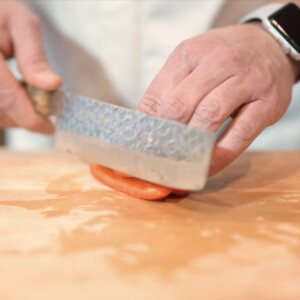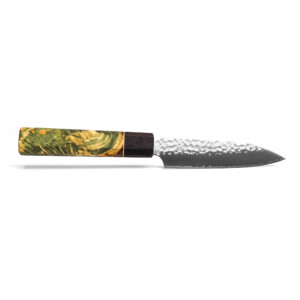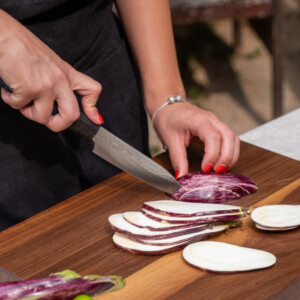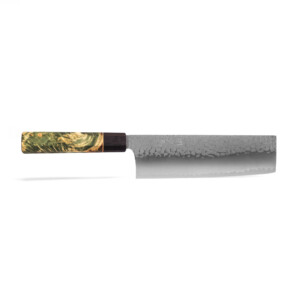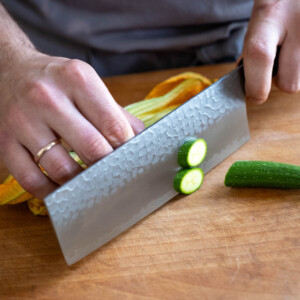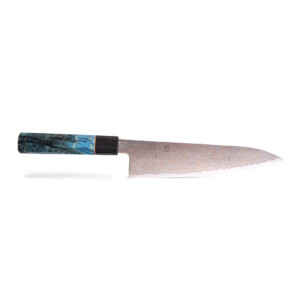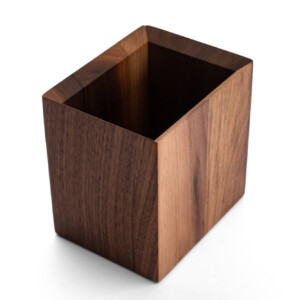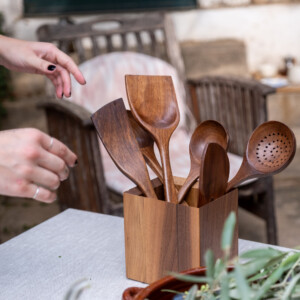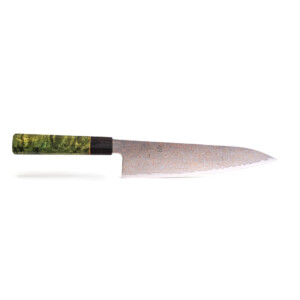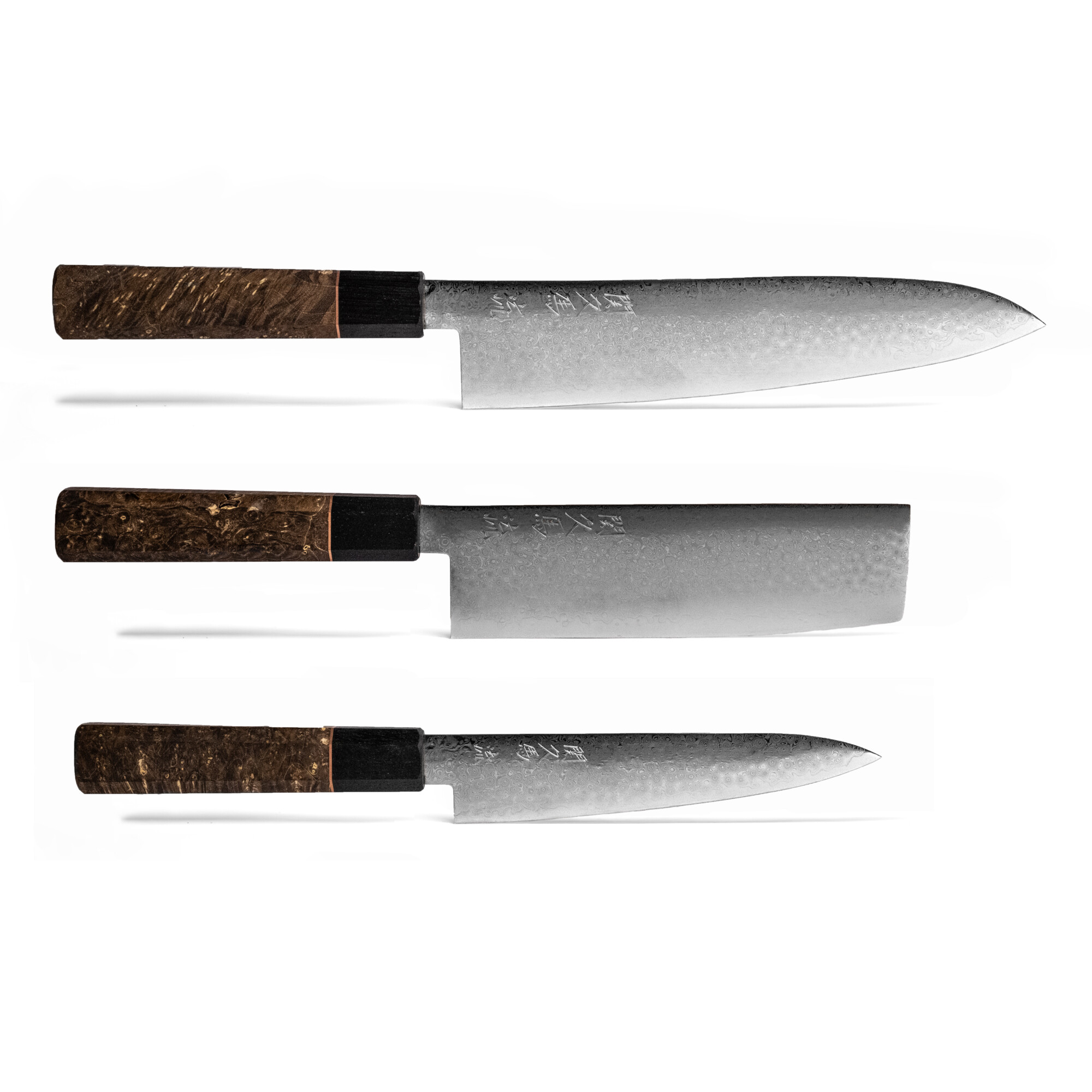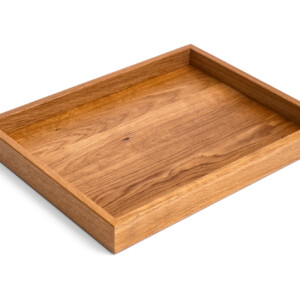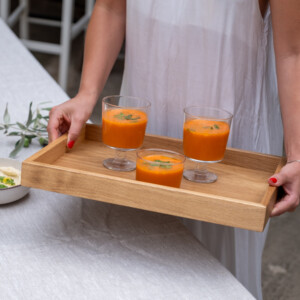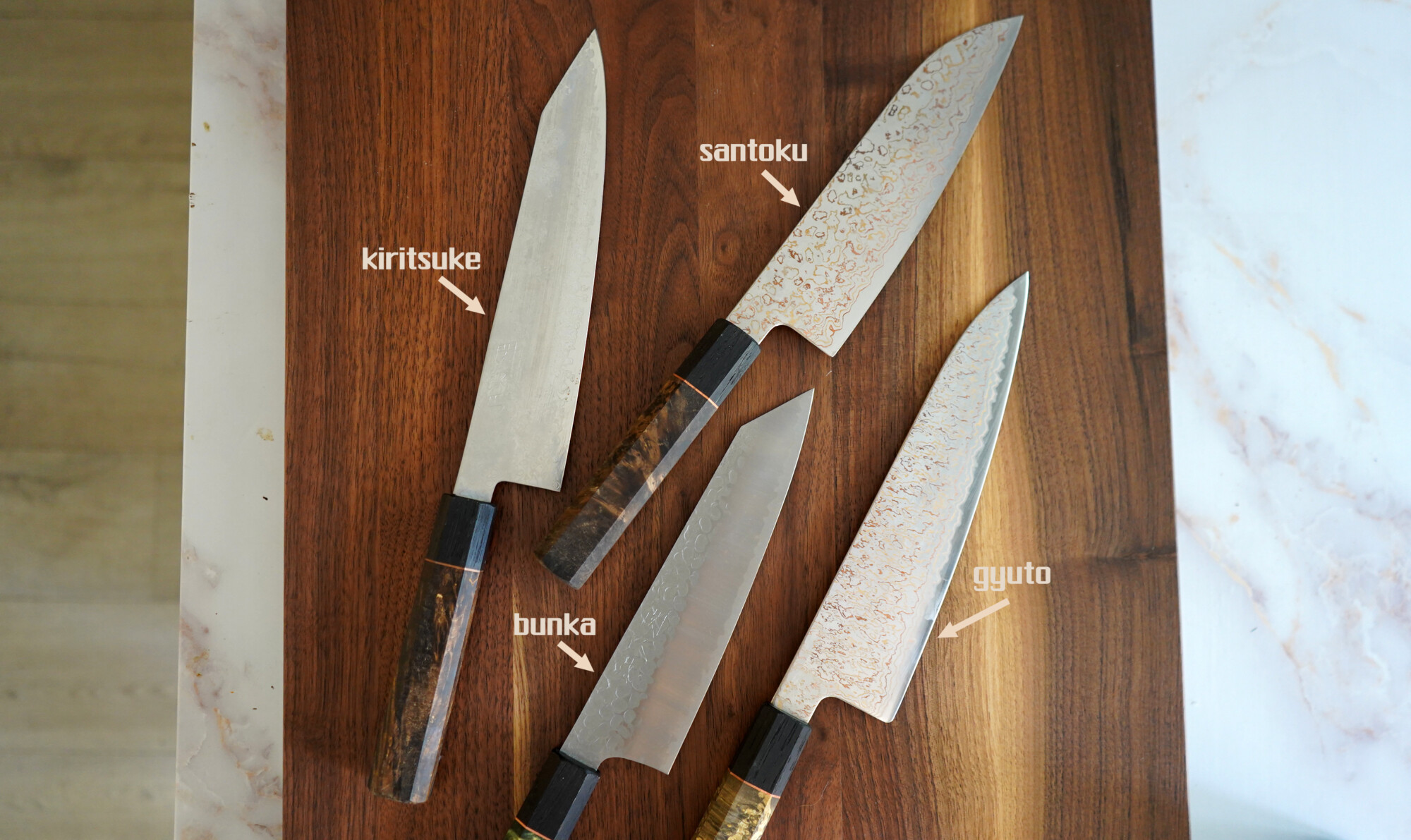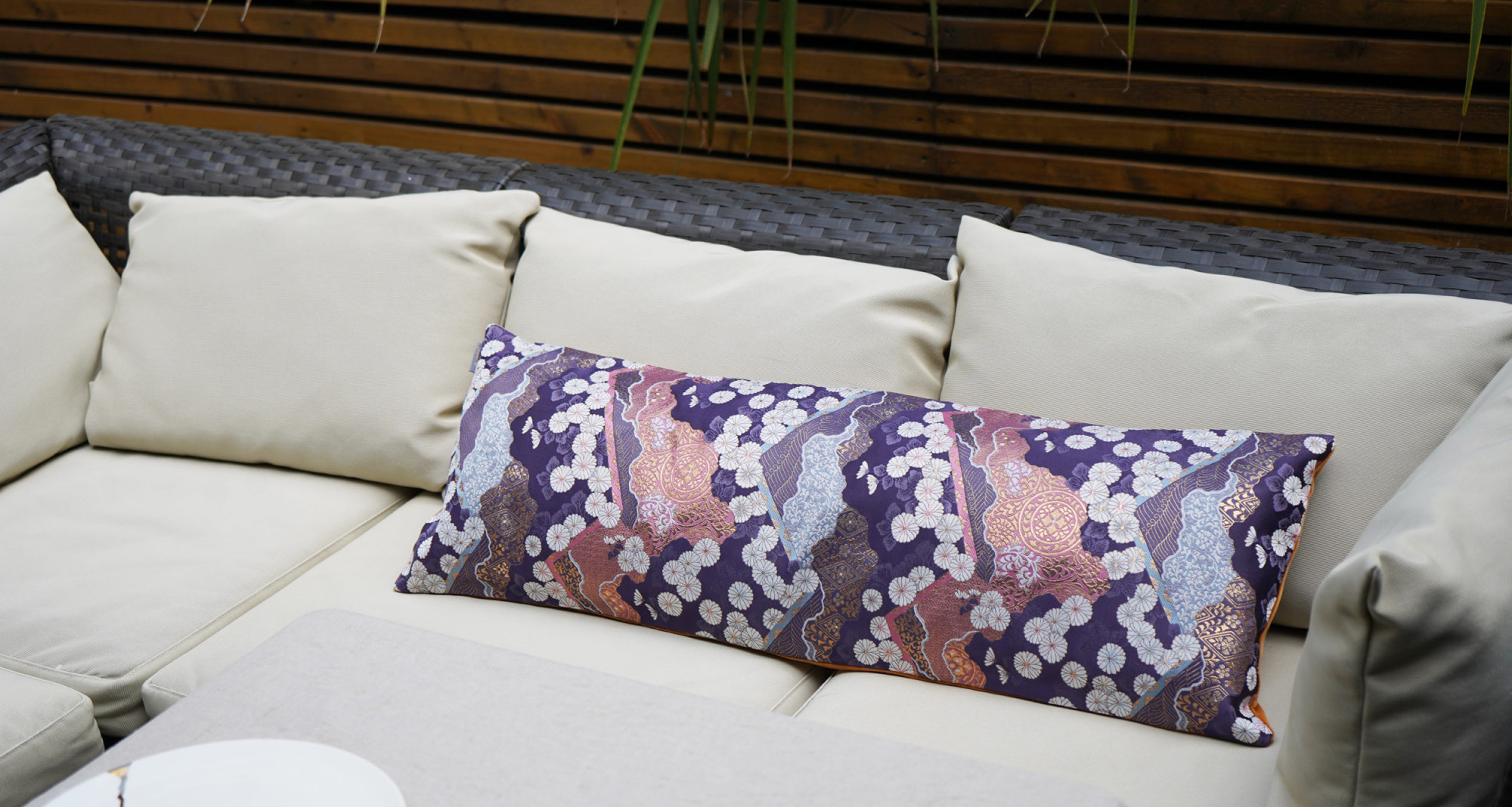In the world of kitchen knives, two prominent players have emerged: German vs. Japanese knives. Each style possesses its own unique characteristics, reflecting the rich culinary traditions of their respective regions. Whether you’re an aspiring home cook or a seasoned chef, understanding the differences between German and Japanese knives is crucial in making an informed decision about the best knife for your culinary needs. In this article, we will delve into the key distinctions between these two styles, exploring their blade construction, design, and cutting performance. So, let’s embark on a journey through the culinary traditions of Germany and Japan to uncover the secrets behind these iconic knives.
These are two examples of the Japanese and German knife and their parts names:
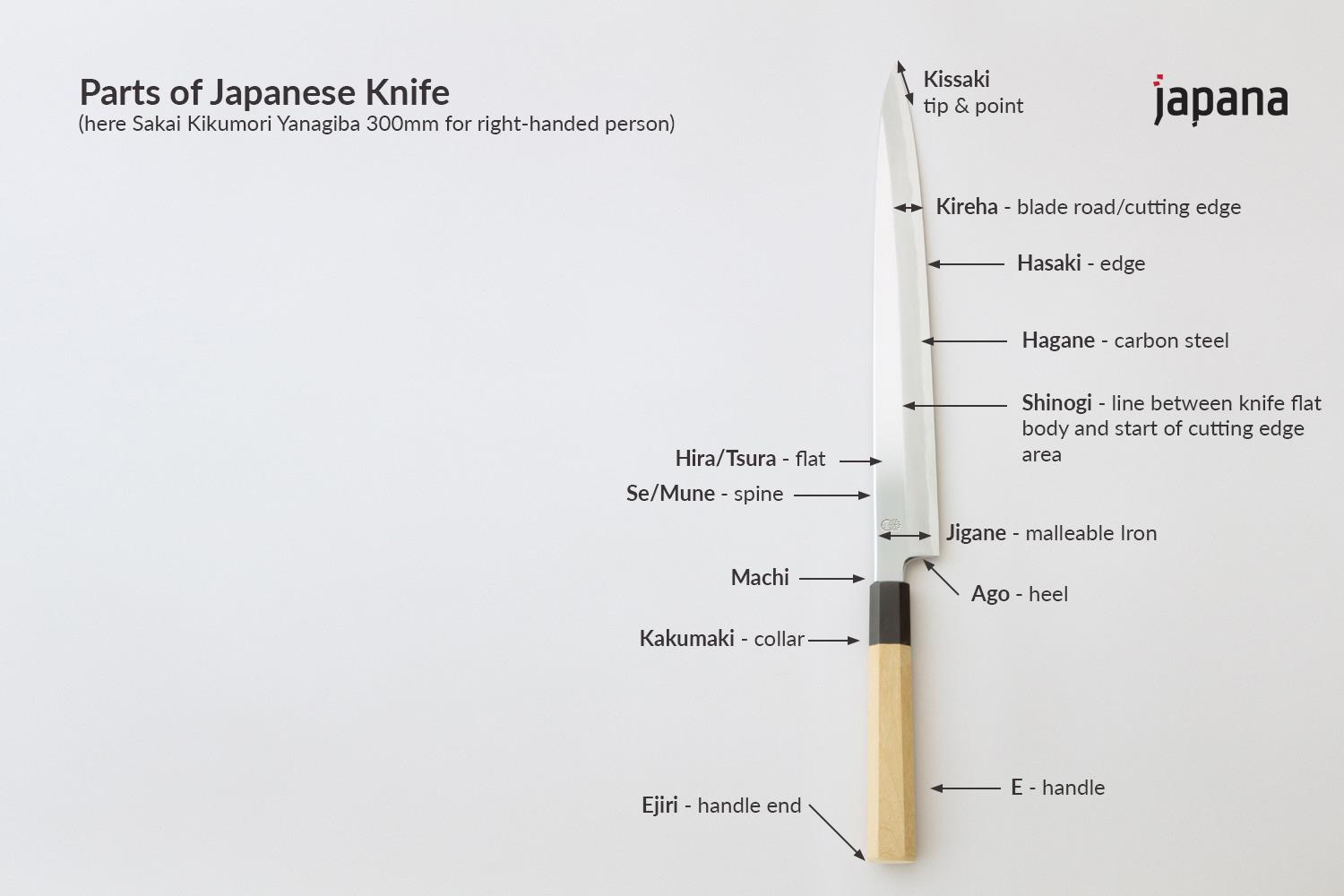
vs.

The Blade’s Steel
Apart from sophisticated simplistic beauty, the typical Japanese knife is well-known for its unparalleled sharpness. A direct descendant from the samurai sword, these knives only have to lightly graze an object in order to make a slice or incision. Their sharpness is greatly due to the hardness of the steal used in the blade’s core. Japanese knives are constructed with steel that has a high carbon content, giving it anywhere from a high 50s to mid 60s on the Rockwell scale. Because of this, they hold their sharp edge well and for longer. However, caring for a sword with high carbon steel means they are more likely to rust.
Meanwhile, a German knife is known for being able to take a beating. Germans designed their knives with a thought of having sturdy, sharp edge, being durable and easy to care for. These knives use softer steel throughout the blade’s core and surrounding. Such technique makes them less likely to chip, break, and rust. However, because of the softer steel, they will never be able to hold as sharp of an edge as a Japanese knife, and you will need to sharpen more often. Ease of care comes with the cost of edge retention, and vice versa.
The Cutting Edge
First, let’s explain what we mean when talking about knives and their cutting edge. The angle of the knife is also referred to as the “bevel.” Most knives have a bevel on both sides, but some traditional Japanese knives have a single bevel, or even differing bevel sizes. Depending on which side a single bevel is located, such knife will be good either for a left or a right-handed person. Typically, however, when talking about knives that have a traditional bevel and a 10 degree angle, it means on both sides, making the total angle 20 degrees.
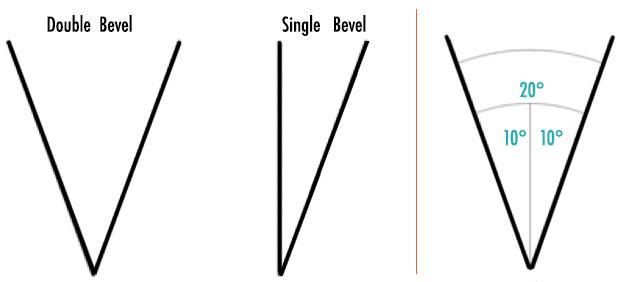
The bevel of a Japanese knife is smaller than a German knife, again making the blade much sharper. The Japanese make both double beveled knives and single beveled knives. In either case, the angle of a bevel in Japanese knives are smaller than that of German knives. In Japanese knives, the bevels are typically anywhere between 7 and 8 degrees. This allows to nicely slice through food, such as raw fish (sujihiki/yanagiba knives), without damaging the cell walls, and therefore preserving the taste and texture. Japanese blacksmiths are able to create this angle thanks to the hardness of the steel used. The Japanese value precision, and the angle of their knives allow for that.
German blades, however, are typically sharpened to around 10 degrees, as a consequence, making them not as sharp as a typical Japanese knife. Yet with their wider bevel they are able to compensate for the sharpness by being versatile and better weighted. They may not have the cutting edge to slice through tough objects.
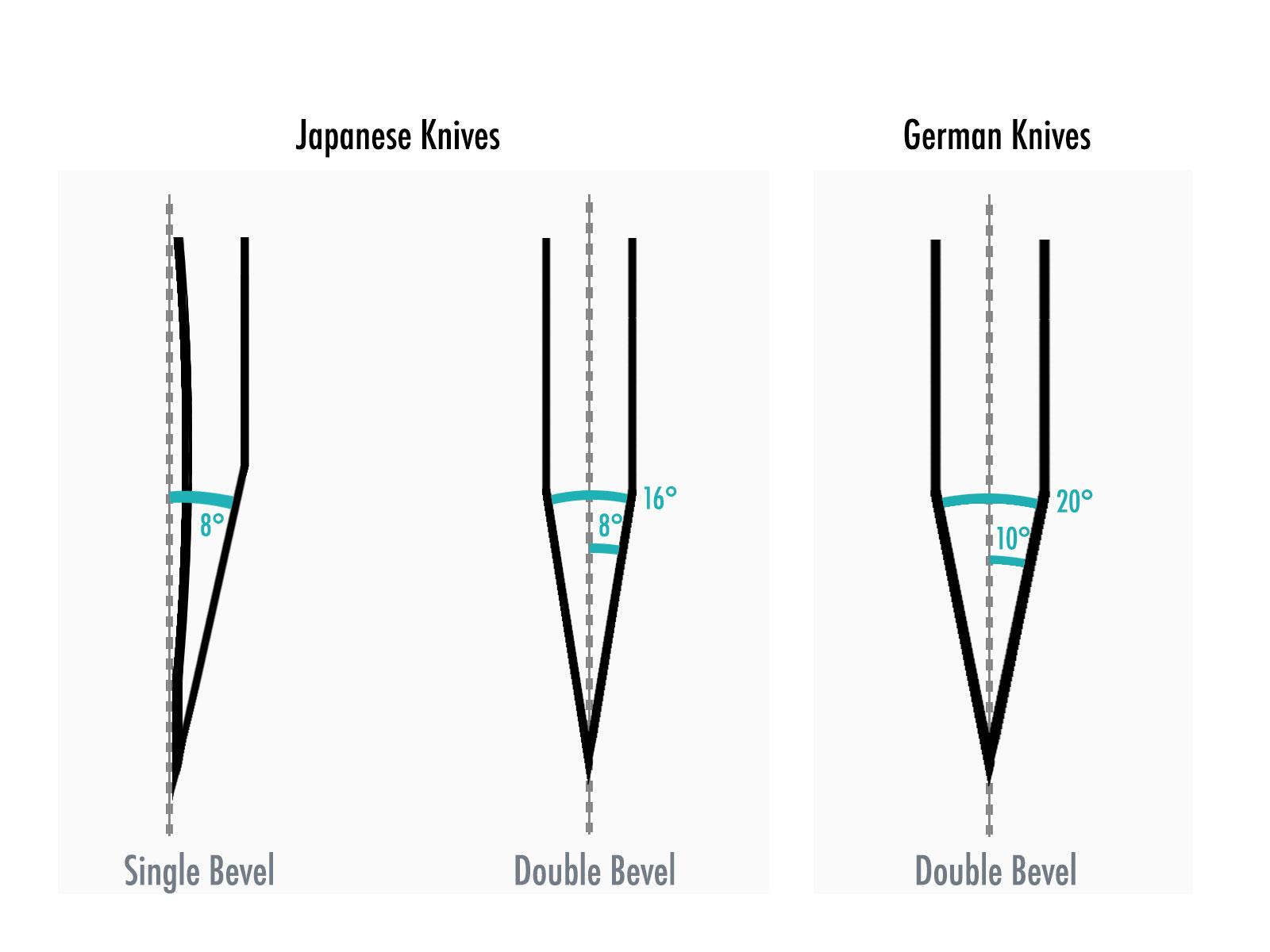
The Weight of the Knife
Culturally, the Japanese are not known for their strength. In war, they relied on battle technique and the sharpness of their samurai swords to defeat their opponents using the least strength possible. All moves had to be precise and quick. In cooking, their strategy is similar. By forging a sharp cutting edge on their knives, they can cut through objects without having to put force behind the blade.
Typically German knives are heavier. While they may not have the extremely sharp edge that Japanese cutlery is known for, they utilise the weight of the knife to do the work for them. This is the reason why chefs who are used to German knives prefer using knives that are heavier.
https://www.youtube.com/watch?v=0hjvEXfaR2E&ab_channel=PrudentReviews
